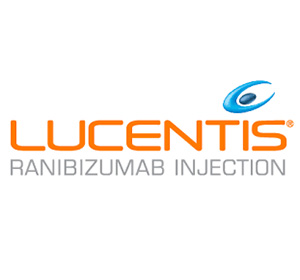
What is Lucentis?
Lucentis is the brand name of the anti-VEGF drug ranibizumab, which is injected into the eye to treat patients with certain eye conditions by slowing down vision loss.
How does Lucentis work?
Lucentis blocks the action of the vascular endothelial growth factor (VEGF), a protein produced by your body that stimulates the formation of new blood vessels. When injected into the eye, Lucentis inhibits the abnormal growth of blood vessels in the back of the eye which can leak and harm your vision.
Indications for Lucentis
Lucentis can be used to treat the following eye conditions:
- Diabetic macular edema
- Wet age-related macular degeneration
- Macular oedema due to retinal vein occlusion
- Presumed ocular histoplasmosis syndrome
- Myopic choroidal neovascularisation
Preparation for Lucentis Injection
You must inform your doctor about:
- Medications or vitamins you are currently taking as certain medications may interact with Lucentis and cause eye problems
- Allergies to medications
- Health conditions such as uncontrolled hypertension or eye infections
Lucentis Treatment Procedure
The Lucentis injection procedure involves the following steps:
- You will be seated in a comfortable semi-reclined position in a chair.
- Your eye will be cleaned to prevent infection.
- Your face and the area around the eye will be draped to maintain sterile conditions.
- Pain-relieving eye drops will be administered to numb the eye.
- A device may be placed to keep your eyelids open.
- The Lucentis injection will be administered into the white portion of your eyeball, also known as the sclera. The injection takes 15-20 seconds and most patients do not feel pain during the procedure.
- Your eyesight will be assessed post-injection and antibiotic drops may be given, after which the drapes are removed.
Post-Operative Care after Lucentis Treatment
- You may be provided with antibiotic eye drops that you should use for 3-4 days to prevent infection.
- Avoid swimming or getting water into your eyes for a couple of days after the injection.
- There may be a slight discomfort, redness, and ‘floaters’ in the eye which will go away on its own in a few days.
- Most patients require a course of 3 Lucentis injections administered at 4-week intervals to obtain maximum benefit.
Risks of Lucentis Treatment
Lucentis injections very safe; however, there is a minimal risk of complications that include:
- Eye infection
- Eye pain
- Increased eye pressure
- Bleeding
- Cataract formation
- Detachment of the retina
Benefits of Lucentis Treatment
Timely treatment with Lucentis injections can improve central detailed vision making it easier for patients with certain eye conditions to read, watch TV, and recognise faces.







